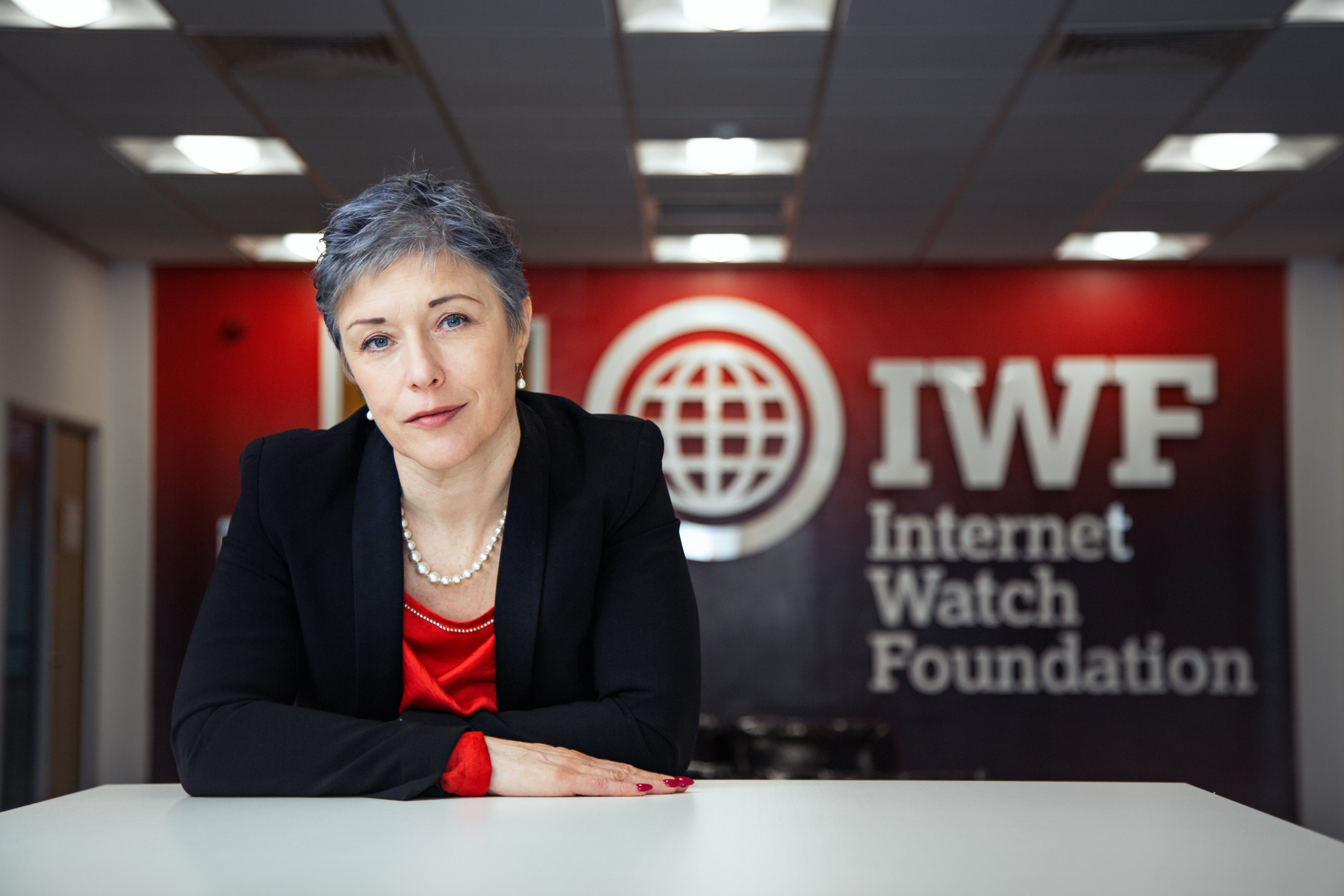
Susie Hargreaves OBE
2020: IWF at its most resilient, and most needed.
2020 brought huge, unprecedented, challenges. As the Chair has reported, as a key worker organisation, we remained open throughout the year, with our Hotline team working in the office under secure conditions whilst all other staff worked from home.
2020 was the busiest year in the IWF’s 25-year history. When I joined the IWF in 2011 we removed, what was then, a record 9,000 webpages of child sexual abuse. Since then, we’ve seen an increase year on year and our team and our technology has had to grow, develop and adapt to meet the challenge. In 2020, we removed a staggering 153,600 webpages. As each webpage can contain one, hundreds or even thousands of images and videos, this equates to the removal of millions of images.
This increase was undoubtedly affected by the pandemic and as lockdown continued, a number of sinister trends began to emerge, particularly a surge of public reports, and a large increase in recordings of children who had been manipulated and groomed in their own bedrooms.
In March, with the onset of the first lockdown, we sent home all our staff whose jobs did not require them to view criminal material. And with a few relatively minor – and clever – modifications we extended the footprint of our Hotline, so all remaining staff were at least two metres apart. After an initial few weeks of working at 50% capacity, we had all our analysts back.
However, the global impact of COVID on child sexual abuse material was stark. At the beginning of the pandemic there was an 89% slowdown in known child sexual abuse images being removed, meaning this material was available online, for longer. We believe this was because the coronavirus had forced some hotlines and abuse teams within companies to work with a reduced capacity, or close for a time, while adjusting to working in new ways.
The other stark impact from 2020 is the rise in “self-generated” child sexual abuse content where children are being targeted online, through a webcam, while they sit in their bedrooms and bathrooms. They’re being manipulated into sexual activities and someone on the other side of the camera – hundreds, or thousands of miles away - has recorded it and shared it online. We saw a 77% increase last year.
Additionally, and horrifically, some offenders are encouraging children to include their brother or sister in this abuse as well. In the autumn we conducted a study looking into this. We saw sibling self-generated abuse eight times a day.
I appreciate that describing what we see makes uncomfortable reading, but the problem is so endemic, that we now believe we have to say what we see so that people realise the gravity of the crime and the depravity that some people stoop to, and the pain and distress caused to children, from babies upwards.
Our analysts witnessed heartbreaking scenes, such as an 11 year old boy appearing embarrassed when asked by his brother to engage in oral sex. And how a six year old boy pointed to the screen, saying “like that” to his four year old sister. Moments later she’s crying, and hurt, and the boy is left looking nervous and confused. They were all manipulated by someone on the other side of a camera.
In 2021, we’ll be delivering a national UK campaign to teenagers and their parents to help build resilience against this type of criminality.
The final, notable, challenge of 2020 was the large number of reports from the public which fell outside of our remit. At times, we experienced a 50% increase in reports from the public. Many hailed from popular conspiracy theories which took hold during last year, and so diverted our attention away from our core work.
Dealing with these takes time. Time that we could spend on removing child sexual abuse material. So this year we will be tackling this to ensure that our analysts can concentrate on having the biggest impact for victims, and so that members of the public who need to report something online can find the most suitable organisations for their needs.
